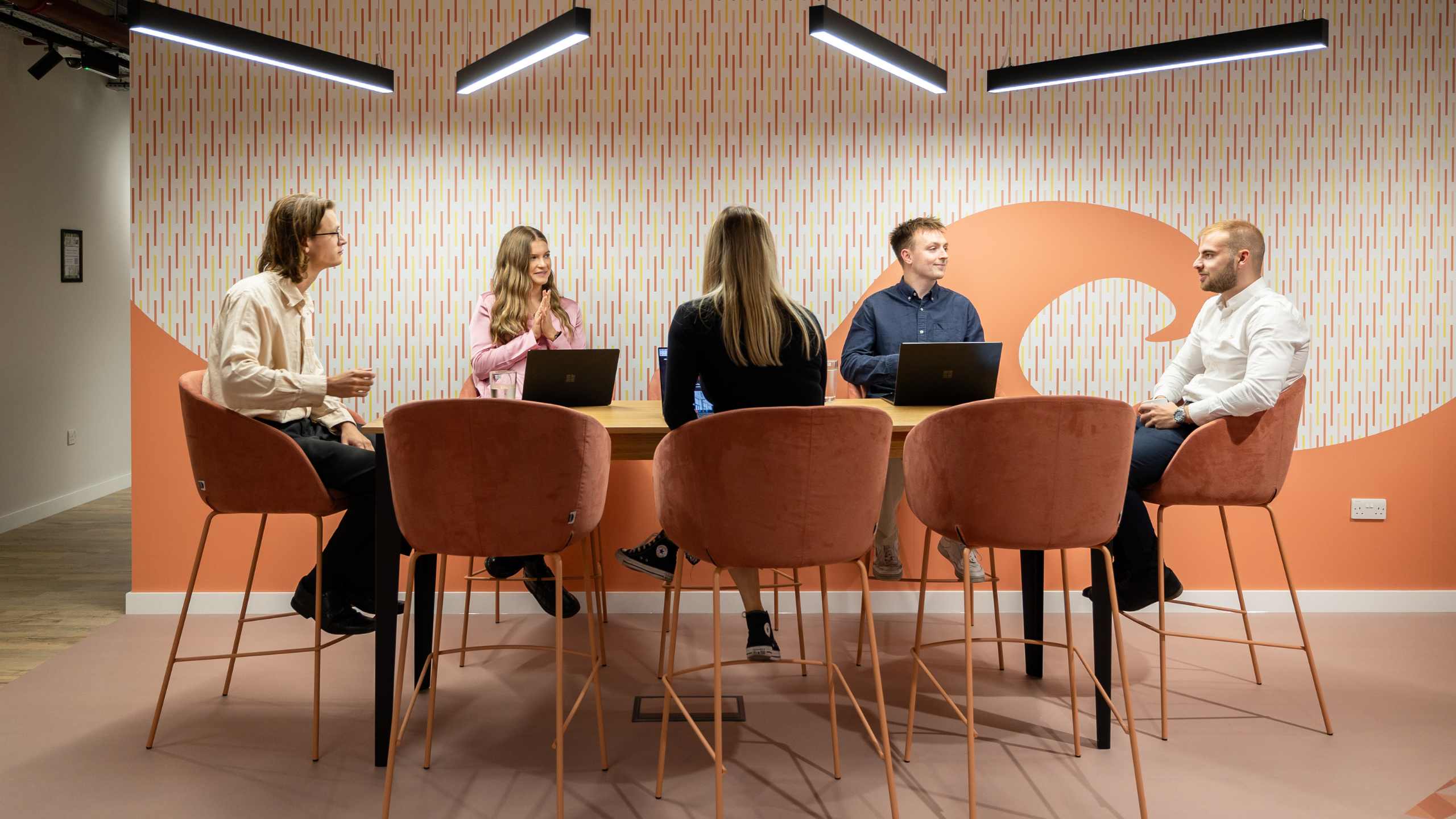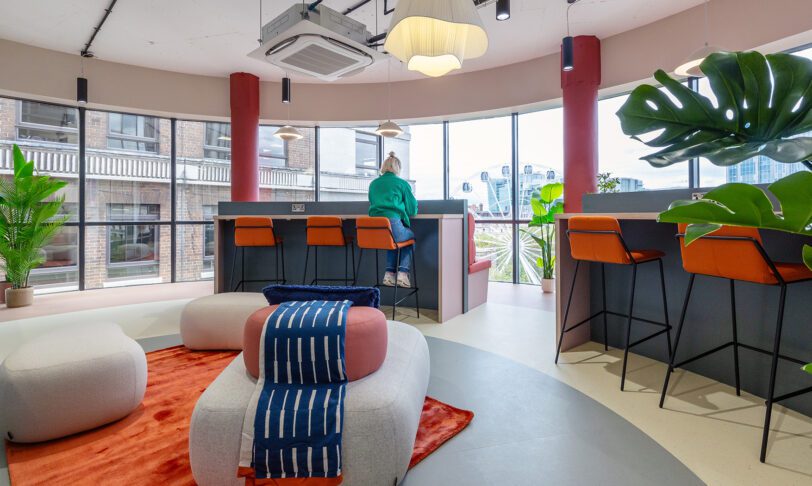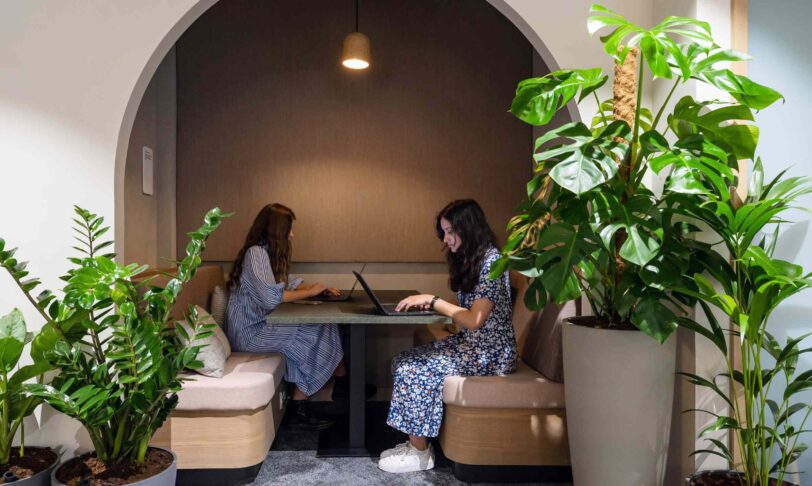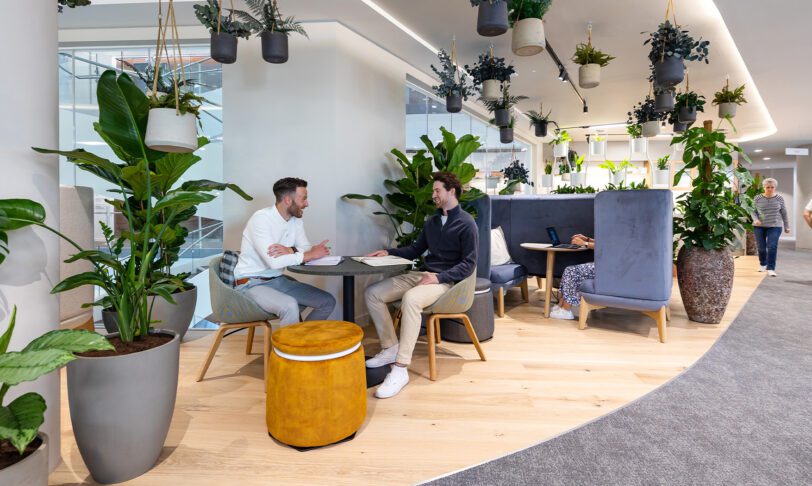Using office design to enhance collaboration
At Interaction, we’re passionate about unlocking the potential of office spaces as engines of collaboration. We believe that creating a collaborative office space goes beyond aesthetics; it’s about fostering an environment that nurtures teamwork, creativity, and innovation.
In this article, we’ll explore how thoughtful office design can be a powerful tool in enhancing teamwork across your business.
Understanding Collaboration
Research shows that collaborative problem-solving leads to better outcomes. People are more likely to take calculated risks that lead to innovation if they have the support of a team behind them. Teamwork encourages personal growth, increases job satisfaction and reduces stress. It’s well-documented that a collaborative workplace provides a beneficial environment for your people. However, in a hybrid world, collaborative working can be tricky to facilitate, requiring a careful balancing of culture, technology and process. In fact, Harvard Business Review has shown that “as teams become more virtual, co-operation declines unless the company has taken measures to establish a collaborative culture”.
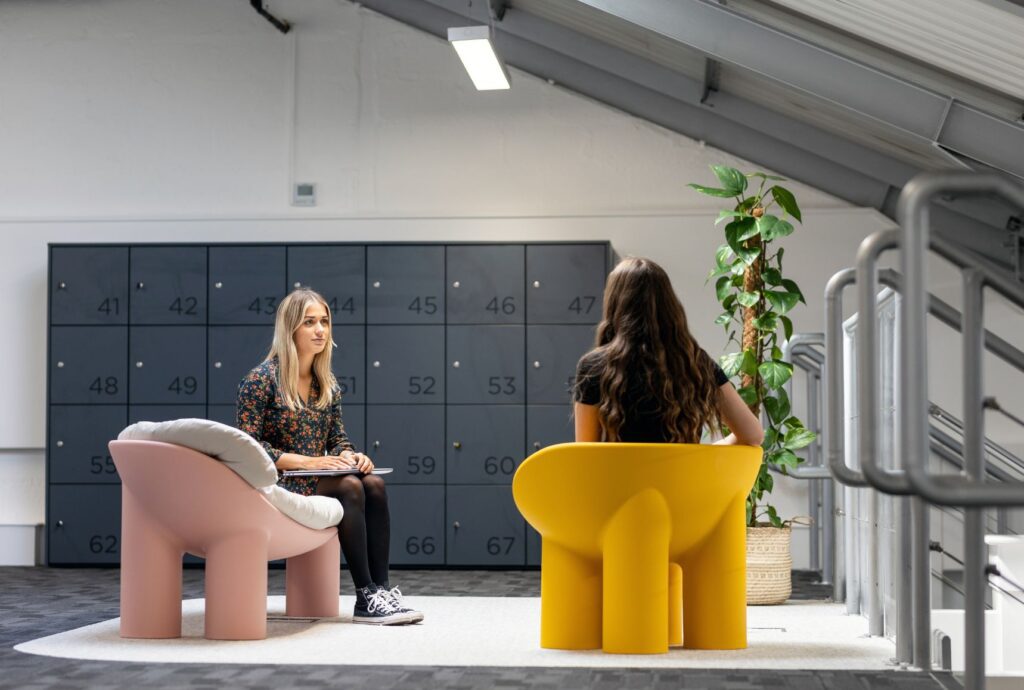
Why you should invest in collaborative office design
- Efficient problem-solving – A collaborative environment promotes quick and efficient problem-solving. When team members can easily communicate and share ideas, finding solutions becomes a collective effort, leading to faster resolutions.
- Flexible environment for different types of workers – A well-designed collaborative office caters to the diverse needs of its workforce. From open workstations for dynamic collaboration to quiet areas for focused tasks, flexibility is key in accommodating various working styles.
- Stronger sense of community – A collaborative workspace nurtures a sense of community among employees. It breaks down silos, encourages cross-departmental interactions, and strengthens the bond among team members.
- Designated areas for specific tasks – Different tasks require different settings. Using an agile work principle when designing specific areas for formal meetings, brainstorming sessions, and individual work ensures that employees have the right environment for every task at hand. Offering a variety of work zones also is beneficial to neurodiverse employees.
- More organic company culture – By promoting collaboration, an office space contributes to the development of an organic and vibrant company culture. Employees feel connected, engaged, and aligned with the overall mission of the organisation. At Interaction, we pride ourselves on our internal culture. Check it out here.
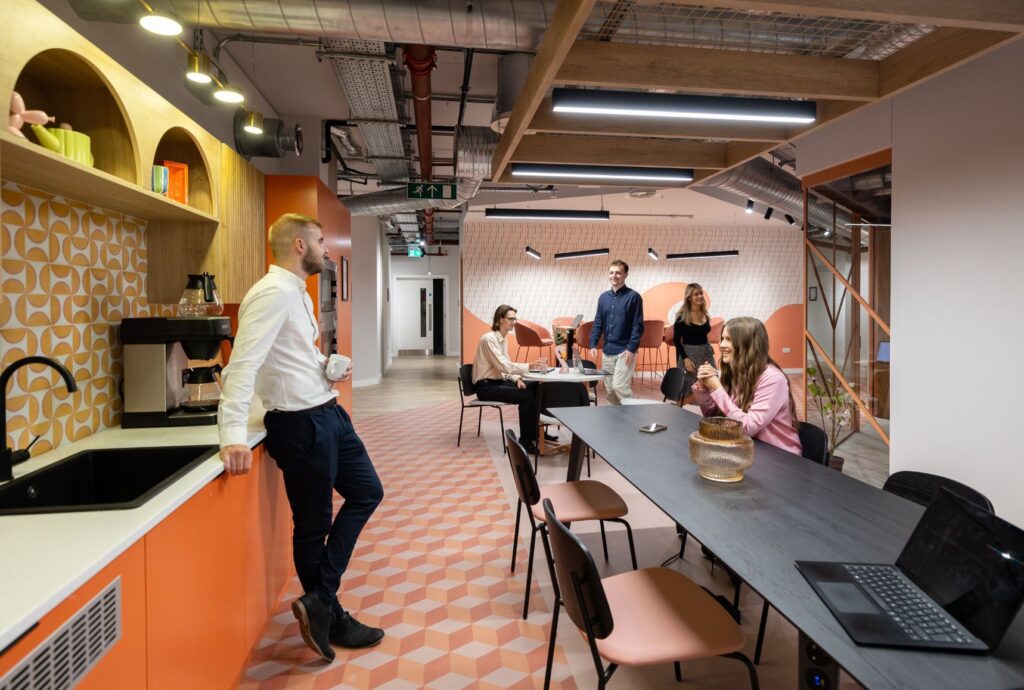
How to Design a Stellar Collaborative Office
Consider the unique needs of your workforce. Are they in need of quiet spaces for concentrated work or communal areas for brainstorming? Tailor the design to suit the preferences and requirements of your employees.
- Consider lighting, acoustics, and furniture – Pay attention to the details that impact the work environment. Adequate lighting, thoughtful acoustics, and ergonomic furniture contribute to a comfortable space for collaboration.
- Encourage professional and social interaction – Create opportunities for both professional and social interactions. Breakout areas, communal kitchens, and shared spaces foster connections beyond work-related discussions, strengthening the overall collaborative atmosphere.
- Make use of occasional structured activities – Occasional team-building activities and collaborative projects can inject energy into the workplace. These structured activities provide a platform for employees to collaborate in a more relaxed setting.
- Listen to employee feedback on the space – Employees are the best judges of their working environment. Encourage feedback and actively listen to their suggestions. This ensures that the office design is continually refined to meet the evolving needs of the team.
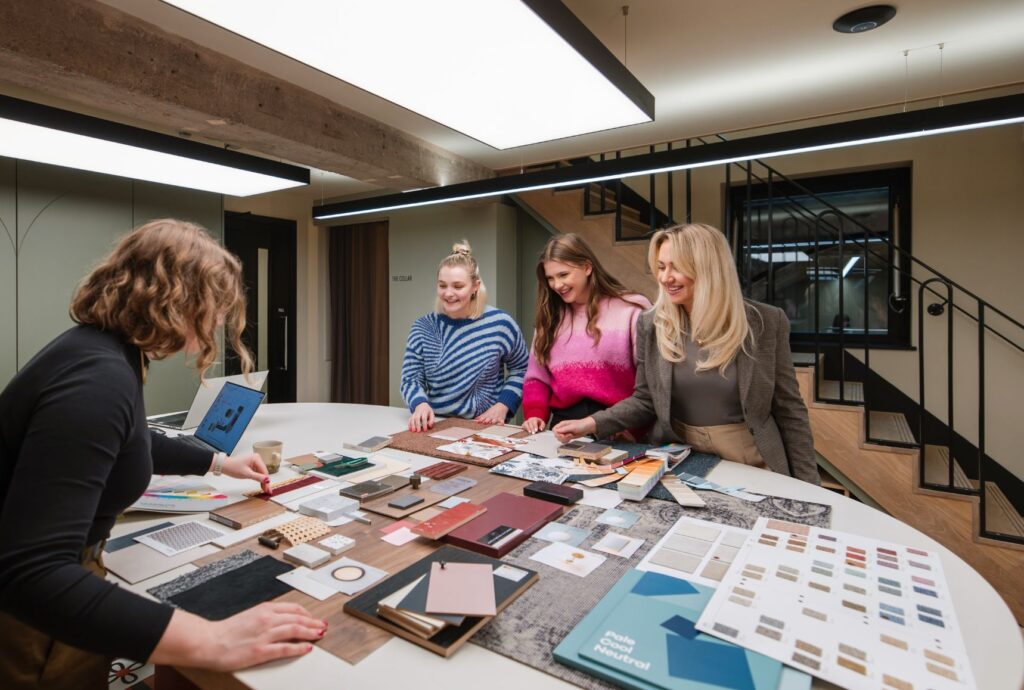
Design Features for Collaboration
Did you know that your business is 5 times more likely to be high-performing if you embrace collaboration?
Part of this success stems from optimising the workplace for bringing people together. This is especially important in hybrid workplaces, where 45% of remote workers say they’d come into the office an extra day per week if the workplace offering improved.
So, how can we design the workspace for collaboration?
- Broken plan layout – Opening up the floorplate encourages spontaneous interactions amongst employees. Including communal areas with comfortable seating to facilitate informal discussions and idea sharing. Making your space “broken plan”, with private and collaborative zones, means you and your company get the best of both worlds; space to come together and create and space for deep solo work – check out Pax8, London & Country and Team Eleven for some examples.
- Varied meeting spaces – Include a variety of spaces suitable for meetings, whether informal catch ups or formal client pitches, providing space for people to get together and collaborate.
- Use curtains instead of walls – Curtains offer a flexible and easily adjustable solution in the workplace. Spaces can be altered to suit the needs of the people using it, suiting the size of the group and the task at hand. This is much more fluid than a solid wall and poses less of a physical and metaphorical barrier to communication.
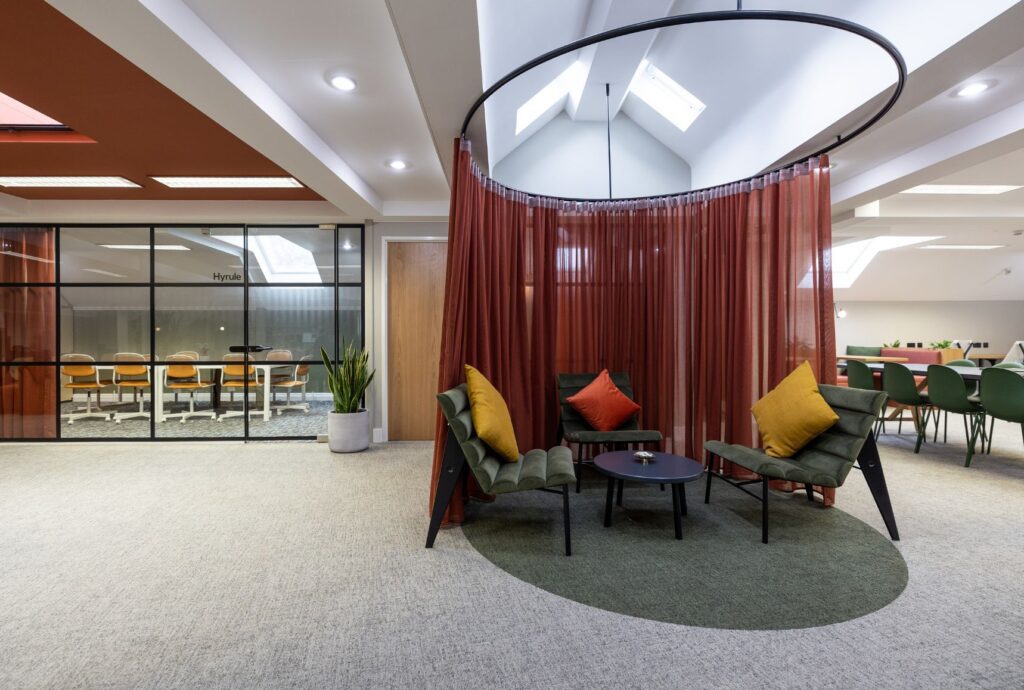
- Flexible Furniture – Modular furniture pieces are great for adaptable work. They can be moved to suit the group using them, the type of work being done, and the individual needs of the people in question. By removing physical barriers and promoting a sense of togetherness, ergonomic furniture creates an environment which aligns with effective collaboration and teamwork.
- Tech Integration – We delve deeper into this in our Guide to Modern Office Tech, but in essence, integrating technology into the office is a modern workplace expectation. This allows seamless collaboration between workers, no matter where they sit down (or stand) to work. Those who are working from home or out of the office still need to be accessible and included in teamwork. At Interaction, and across several of our projects, we have a Catchbox microphone, and a speaker-tracking webcam. This means that in large hybrid meetings, when the person speaking is handed the cube, remote participants can automatically see and hear everything going on and respond. Collaboration in action!
- Breakout Spaces – By giving employees spaces to collaborate in a more relaxed setting, they are able to take a step back from their desks and rest their brain. This is beneficial for both productivity and wellbeing. At The Quarter, we have a comfortable breakout space with calming green hues and soft seating, ideal for relaxing over lunch and building relationships after work.
Collaborative Office Design with Interaction
At Interaction, our office design expertise can transform your results, by bringing people together to make tangible progress in an inspiring environment. It pays to prioritise collaborative zones and leave the normative, conservative ‘desk farms’ behind. Check out our case studies here, and get in touch today on 01225 485600, or Chat with Charlie.
